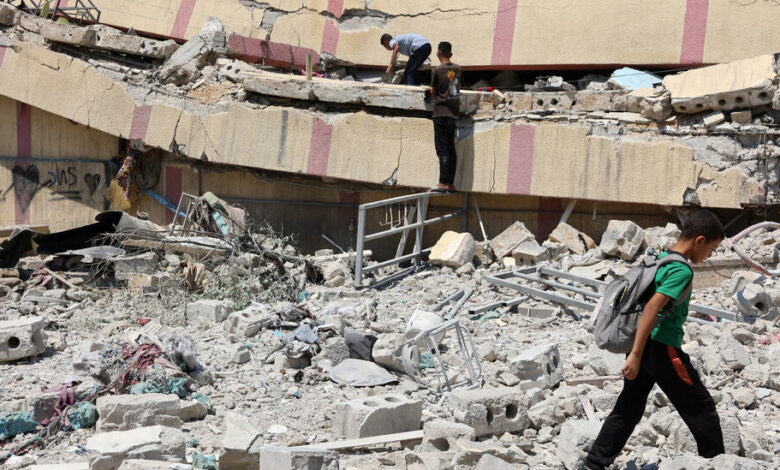What is in the latest US proposal for a ceasefire in Gaza?

The Biden administration is again pushing for a ceasefire between Israel and Hamas in Gaza, with a new proposal it says could bridge the rift between the two sides. But the latest US effort, which builds on an earlier framework, appears to have run into problems again.
Below is an overview of the developments that have occurred in recent months and what the main bottlenecks are this time:
What is the status of the conversations?
Negotiations brokered by the United States, Egypt and Qatar have been progressing slowly since early December, when hostilities resumed after a week-long ceasefire that saw Hamas release more than 100 people from Gaza captivity and Israel free 240 Palestinian prisoners. In late May, President Biden endorsed a new three-phase plan and the UN Security Council followed by a resolution in support thereof.
The first phase would involve a six-week ceasefire and the release of hostages in exchange for Palestinians held in Israeli jails. People expelled from northern Gaza would be allowed to return to their homes, many of which lie in ruins. During that time, Israeli forces would withdraw from populated areas of Gaza.
The second phase provides for a permanent ceasefire, while the third consists of a multi-year reconstruction plan for Gaza and the return of the remains of deceased hostages.
But for months, Israel and Hamas, whose negotiators do not speak directly, have been far apart on key issues.
What is the new US proposal?
On August 8, 11 months into the war, President Biden and the leaders of Egypt and Qatar said they were prepared to present a “definitive” ceasefire proposal. Last week, during talks in Qatar, the United States presented what it called a “bridge proposal” to try to bridge some of the rifts between Israel and Hamas.
The details of that proposal have not been made public, but the Biden administration has tried to throw diplomatic weight behind it. During a visit to Israel this week, Secretary of State Antony J. Blinken warned that this was “perhaps the last chance” to secure a cease-fire, and later said that Prime Minister Benjamin Netanyahu had told him in a meeting that he was committed to the U.S. proposal.
But both Israeli and Hamas officials familiar with the talks said the US proposal leaves major differences largely unresolved.
What is the biggest bottleneck?
In broad terms, the US proposal appears to meet the new demands added by Mr Netanyahu in July, namely that some Israeli troops enter part of an area in Gaza along the border with Egypt, Hamas and Israeli officials said.
This has become a crucial issue. Mr. Netanyahu sees an Israeli military presence in the area, which Israel calls the Philadelphia Corridor and Egypt calls Salah Al Din, as essential to prevent Hamas from rearming itself after the war or rebuilding tunnels into Egypt.




